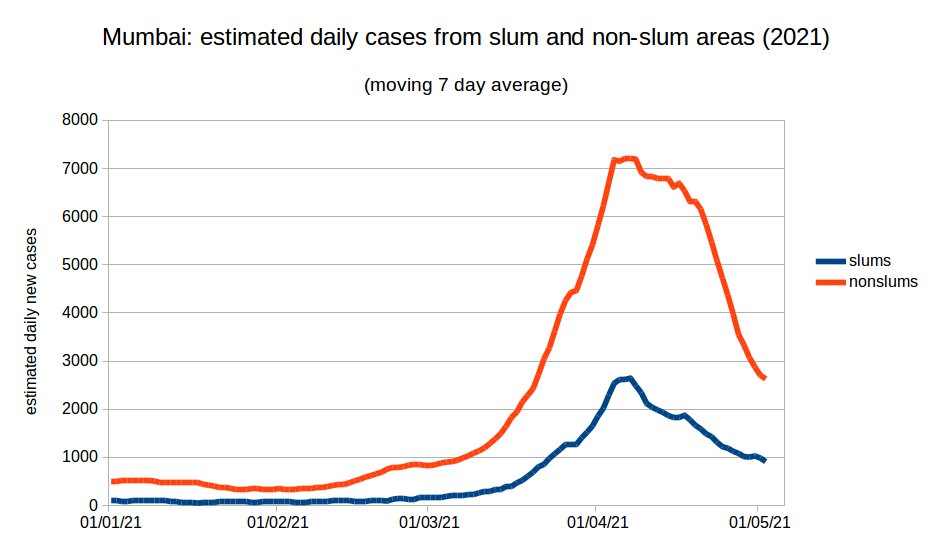Hopeful signs that hospitalisations/deaths are peaking in Mumbai. If so, there& #39;s been a long delay of ~24 days since (weekly average) cases peaked - around April 7. Trying to understand the delay leads to some observations. (1/5)
Anecdotally, doctors have not reported a major surge in severe illness from the slums in Mumbai during this wave. It seems most hospitalisations involved building society residents (correct me if I& #39;m wrong - the data is limited). This is in contrast to April-June, 2020. (2/5)
But ward-wise data says there were plenty of slum infections during this wave - so why less reported disease? Weak surveillance in the slums could play a part. But perhaps prior infection in the slums (75%?), was protecting people from severe disease (but not infection). (3/5)
This is speculative, of course. It would help explain the delay in fatalities peaking: estimated nonslum cases barely fell for around 10 days after the city& #39;s cases peaked ~April 7. After this, they fell sharply - this should, hopefully, be seen in fatality data soon. (4/5)
We could be seeing a pattern in cities where areas with high levels of infection last year see less severe disease. I.e., prior infection is largely preventing severe disease, but less effective at slowing transmission. See also this thread. (5/5) https://twitter.com/muradbanaji/status/1384549864386740228">https://twitter.com/muradbana...

 Read on Twitter
Read on Twitter





